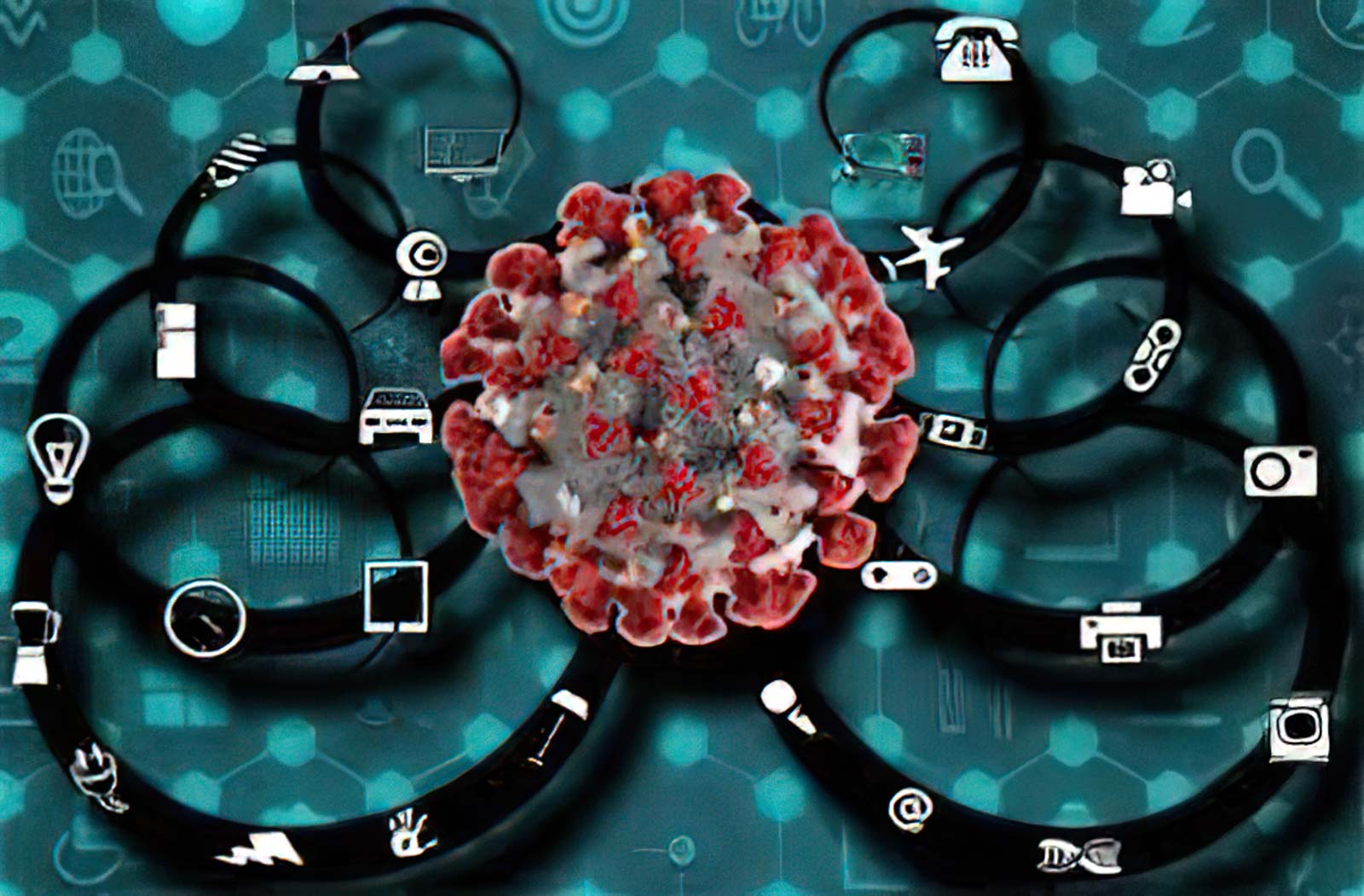We’ve been disrupted. In boardrooms all over Australia, we’ve been planning for inevitable disruption for years. But nothing could have prepared us for what is unfolding now in terms of its scale, reach, human impact, and economic consequences. Instead of the expected disruptive plays, we’ve been disrupted by a microscopic piece of genetic material surrounded by a coat of proteins, that is entering our healthy cells and hijacking them, creating copies of itself. It’s a silent and invisible terrorist that’s moving at speed and it’s massively disrupting our economy and way of life all over the planet.
What’s so unexpected about this particular disruption is it’s affecting us all individually, with our own health and wellbeing at risk and that of our loved ones, as well as our way of life, and our economy. Everyone is affected in some way and it’s non discerning; it’s threatening all of us irrespective of our age, class, gender or ethnicity. The fear it is generating across the nation is palpable. People we know are getting sick and we’re told more will in time. People we know are losing their jobs and income. And now we’re a nation largely confined to our homes and our suburbs. The Australian states have shut their borders and almost all the planes are grounded.
It’s massively upsetting our Australian way of life with most companies now directing their employees to work from home indefinitely, putting existing technology platforms to the test. If ‘Work From Home’ policies haven’t already been developed, these are being hastily written to set people up effectively and manage the various risks of this new way of working.
For a couple of weeks, this chaotic state is manageable. But the advice is that this may drag on for many months. It raises the need to have a plan for maintaining the organisational culture, for measuring productivity, for maintaining connectivity, for continuing to encourage innovation, for ensuring social connectedness, for delivering communication, for managing risk, and for ensuring the ongoing health and wellbeing (physical, emotional, mental) of a large remote workforce. Technology can only go so far.
Very few if any leaders would have experience of leading through a pandemic because we could not have foreseen a crisis of this magnitude. We need leadership that can lead through this crisis decisively, whilst supporting people emotionally through trauma, who can drive connectivity while everyone’s remote, and who can quickly move resources around and maintain productivity and service levels when a percentage of the workforce might fall ill at any given time. And this all needs be done while managing the considerable risks that this arrangement is presenting. Leadership is stressful. This is next level.
This is the time for authentic, compassionate, and decisive leadership. Here are some important considerations for leaders in order to set their teams up for success at this unusual time:
1. Fit your own mask first
As a leader (or a parent), you can’t be there for others unless you’ve first taken care of yourself. In this time of COVID-19, it is more important than ever to get plenty of sleep, eat well, meditate for (at least) 10 minutes a day to calm yourself and manage your state, and get daily exercise, preferably outside for the immunity boosting Vitamin D benefits. If you’re healthy and refreshed, you’ll be able to hold space for others and you’ll keep your energy and immunity up. If you are feeling overwhelmed, meditate some more, go for a walk, talk to a friend, colleague, coach or therapist. You are needed to help steer the ship through these choppy waters. Do whatever you need to do to be feel calm and in control.
Do you feel calm and in control now? If not, what do you need to change? Where can you get some support?
2. Talk to your teams daily and help them feel more in control
Most people are not used to working out of their home for long periods. Whilst attractive in short bursts, working from home can be lonely and people can feel isolated. As well, people may not have good office set ups in their home. Leaving people without daily contact at this time is not a good strategy. We knew even before COVID-19 that anxiety and depression was on the rise in the community. We now have a perfect storm with people physically disconnected and alone with their thoughts, reading the news and feeling anxious. Some may be in trauma if loved ones are unwell or have lost their livelihoods. Daily connection is imperative. Ask people how they are feeling, listen with compassion, and allow them time to voice their worries. People are scared, leaders can make them feel safer. If they need specialist support, you can refer them to a professional. Wherever possible make it more personal with the use of technology such as FaceTime, Zoom or whatever your collaboration technology is. This daily connection will also help you to manage risk and resources.
Are you talking to your team members everyday? How can you support them better? What do you need to know from your team members in order to do your job more effectively?
3. Create a sense of community
Most people enjoy being in an office environment for the social interaction, mental stimulation and teamwork. It can be a shock to the system for people to find themselves working remotely for weeks or months on end. But we can replicate that sense of camaraderie on-line. Our technology has come a long way in supporting remote workers. It is easy to conduct a team meeting on Zoom, and everyone can have coffee, lunch or drinks together virtually. We need to recreate a sense of belonging and have a safe space for people to share their concerns and feel supported. Leaders can facilitate conversations that enable connection and keep our teams in a positive mindset. This supportive team environment could be a lifeline for team members struggling through this crisis and help them support others in their families or communities. This will also help your engagement longer term when life gets back to normal.
Are you facilitating a sense of community with your teams? What could you do to make it even more connected and supportive?
4. Manage Productivity and Accountability
Just because people are not in the office does not mean they shouldn’t be as productive. Leaders can still facilitate productivity and drive accountability remotely. If you are not used to workers being remote, this is the time to put some simple systems in place and determine an appropriate operating rhythm for your team meetings. Do you have productivity software? If not, a simple spreadsheet or template will suffice. Be clear on your expectations and deadlines and hold people accountable for delivery. Existing goals and KPIs should still apply. Your customers will need you on your A-game right now. This is not a holiday. Seamless business continuity depends on your teams maintaining the same levels of service and productivity.
Are you managing productivity well right now? Are you holding your team members accountable? Do you know what your team are working on? Do you need some systems to bring greater transparency to what people are doing?
5. Communicate, Communicate, Communicate!
In times of crisis, you cannot communicate too much – both verbal and written. Keep it real, honest and frequent. If you don’t know something, say so. If you’re worried, say so.
Are you communicating enough? Is your message authentic and vulnerable?
6. Maintain your Culture
What you do now during this time of crisis will shape your culture longer term – positively or negatively. Have you defined your end state culture? Are you clear on your organisational values? If so, this is an opportunity to reinforce this through this new way of working. If you want greater collaboration, this can be facilitated remotely. If you value trust, trust can be demonstrated through your online team meetings. If you haven’t defined your ideal culture, perhaps this is the time to consider what is important for the achievement of your strategy and look to demonstrate this through your leadership.
What are the key elements of your culture and how could you demonstrate this through your own leadership at this difficult time? What could you do now that would help your culture longer term?
At the end of this pandemic, we hope we go all back to normal. But at this stage, we don’t know what normal will look like and who’ll be left standing. Those that lead strongly through this time will be well set up for when it’s time to get Australia back on track. This is the time to lead with the most humanity you’ve ever demonstrated. Fill your own tank first, then lead your teams decisively, with compassion and understanding whilst keeping your business on track to support your customers and the community. Stay safe everyone!




